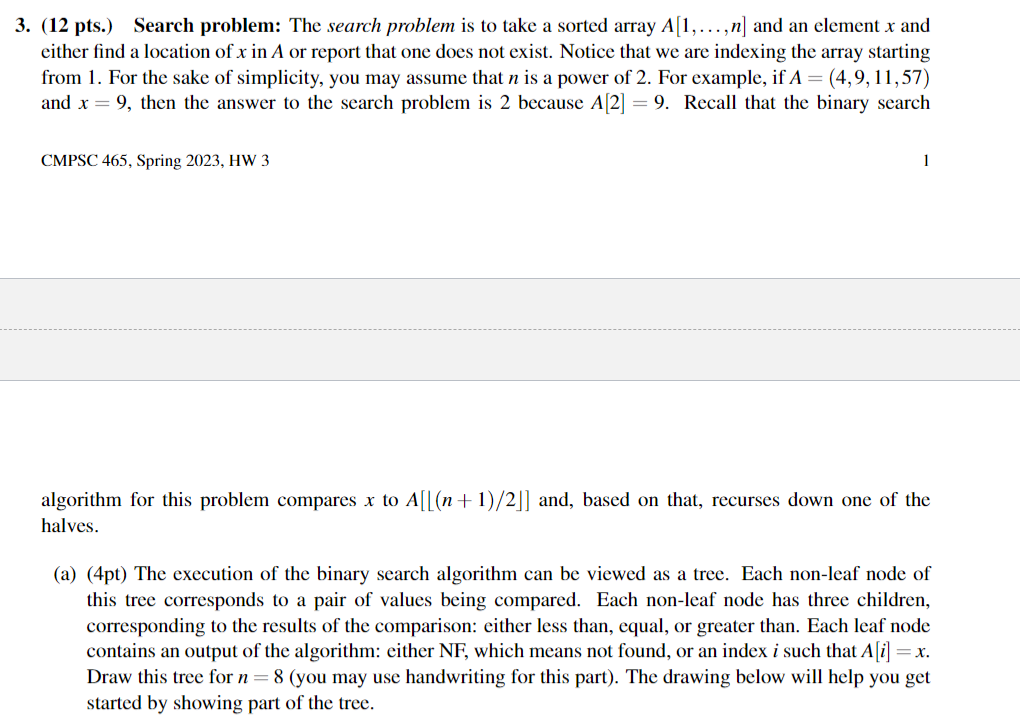

3. (12 pts.) Search problem: The search problem is to take a sorted array A[1,,n] and an element x and either find a location of x in A or report that one does not exist. Notice that we are indexing the array starting from 1. For the sake of simplicity, you may assume that n is a power of 2. For example, if A=(4,9,11,57) and x=9, then the answer to the search problem is 2 because A[2]=9. Recall that the binary search CMPSC 465, Spring 2023, HW 3 1 algorithm for this problem compares x to A[L(n+1)/2]] and, based on that, recurses down one of the halves. (a) (4pt) The execution of the binary search algorithm can be viewed as a tree. Each non-leaf node of this tree corresponds to a pair of values being compared. Each non-leaf node has three children, corresponding to the results of the comparison: either less than, equal, or greater than. Each leaf node contains an output of the algorithm: either NF, which means not found, or an index i such that A[i]=x. Draw this tree for n=8 (you may use handwriting for this part). The drawing below will help you get started by showing part of the tree. (a) (4pt) The execution of the binary search algorithm can be viewed as a tree. Each non-leaf node of this tree corresponds to a pair of values being compared. Each non-leaf node has three children, corresponding to the results of the comparison: either less than, equal, or greater than. Each leaf node contains an output of the algorithm: either NF, which means not found, or an index i such that A[i]=x. Draw this tree for n=8 (you may use handwriting for this part). The drawing below will help you get started by showing part of the tree. (b) (2pt) Next, consider any comparison-based algorithm to solve the search problem and its corresponding decision tree. By "comparison-based", we mean that all the decisions of the algorithm must stem from the result of comparing x to some element of the array. Let d be the maximum depth of the decision tree and let be the number of leaves. What is the maximum number of leaves that this tree can have, as a function of d ? (c) (2pt) What is the minimum number of leaves that this tree needs, as a function of n, in order to be able to output every possible location? (d) (4pt) Argue that any comparison-based algorithm must take (logn) time








